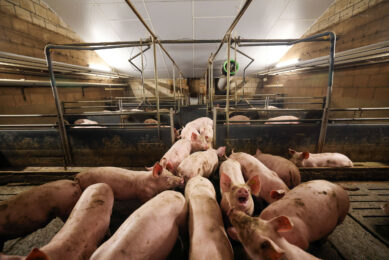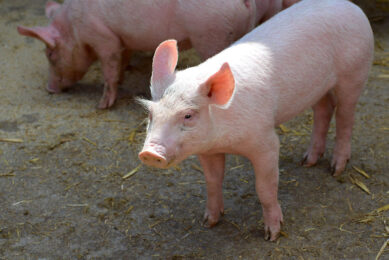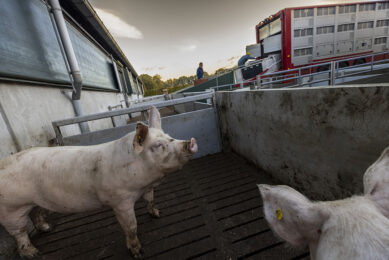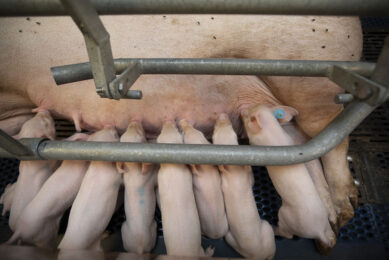Quarterly update: Global outlook driven by Covid-19
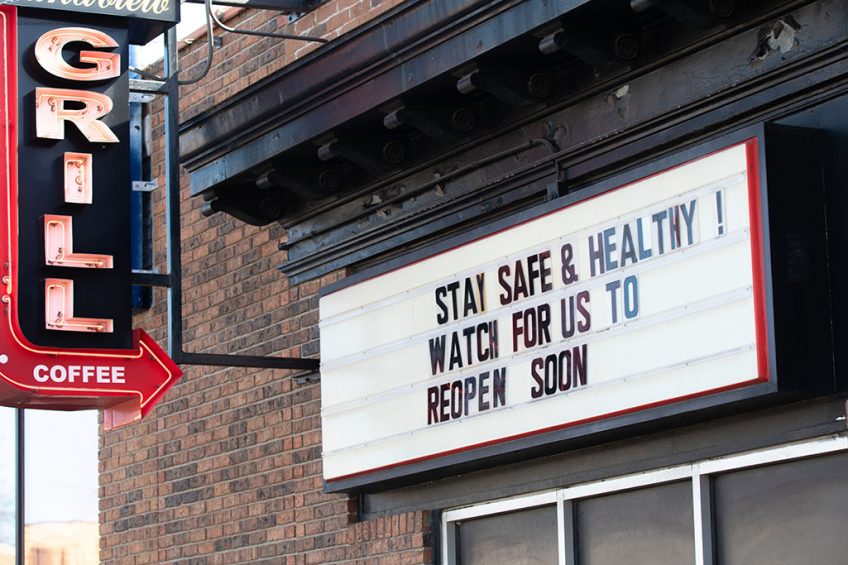
In the early part of January, the outlook for the global pig industry was positive. The New Year forecast by market price expert Dr John Strak then was that pig farmers would share in good fortune in 2020 – but that was before Covid-19. The global outlook is very different now and it is time for a reboot.
To be clear, Asia’s demand for pigmeat because of ASF has not dramatically changed. However, there have been significant changes in one major pork exporting and consuming economy: the United States. This affects the global picture.
I do not need to restate all the statistics that relate to Covid-19 here since it is obvious that the ‘lockdown’ of people and economies has been widely taken up by governments and that it is this policy that directly affects demand – in particular the demand for services and products in the hospitality and foodservice sector.
Outlook less certain
These Covid-19 policies also drive increases in un(der)employment and consequently, drops in consumer incomes and demand worldwide. In all of this, the impact of the application (or non-application) of lockdown policies in different countries is important in assessing price effects. I suggest that they have had a major impact on the US hog sector. The net result of these Covid-19 driven changes worldwide (most of which have occurred in the last 6 weeks) is that the outlook for global pig prices in 2020 is less certain – and there will be important regional differences.
US hog market in times of Covid-19
First, we need to look at the US market. When discussing the US hog market in January this year I predicted that, “there will be record numbers of hogs brought to market in the USA in the next 12 months.” I still think that will happen in 2020 – although this record kill may be part of a sharp contraction in the national herd in 2020. That is not what I was thinking when I forecast record production.

How will China deal with the world after ASF?
Overall hog price down
That said, as I write this there is a growing number of packers and slaughter lines in the US that are shutting down or on reduced capacity because of the loss of Covid-19 affected workers to keep their lines running. Adding to this capacity problem, there has been a further impact on hog prices as the demand from the foodservice sector has collapsed – some parts of the pig carcass now have no market and so the overall hog price has shifted downwards. To make things worse, US unemployment is now estimated at around 17% and is still rising as firms lay off workers in response to the lockdown. In the financial crisis of 2009, the US unemployment rate reached 10%. US consumers’ spending power will take a massive hit in 2020.

This figure illustrates the way in which US hog prices have gone down sharply in the last few weeks. The US hog futures market seems to think that prices are not going to move up again this year with current futures prices set at around the level seen in 2002. Again, as I complete this piece, there are rumours that the US federal government may step in to buy up and store pork (and beef) to help farmers, but how this works if there are no workers to keep the slaughter lines operating, I do not know.

This figure illustrates the long run behaviour of US hog prices – the recent collapse echoes the experience in 2002. Too many hogs chasing too few buyers will have only one result – low prices.
Prices in Europe in times of Covid-19
Meanwhile in Europe, prices have gently declined in the last month. They have not fallen by anything like as much as those in the US. Indeed, EU pig prices are still around 12% higher than they were last year and, as a mark of confidence, weaner prices in Europe in April are about 26% higher than they were in 2019.
Supply position in Europe
The supply position in Europe is also very different than in the US. In January, I wrote that I expected that EU pig numbers and pigmeat production would recover in 2020. They have shown signs of expansion according to the December 2019 census (released in March 2020).
Reactions to Covid-19
But this is only one driver for prices and arguably not so important in 2020 when ASF has hit global supply. The big difference is the way in which the US and EU have reacted to Covid-19 at government level. Across all the major pig producing countries (and indeed the entire EU) governments have countered the transmission of Covid-19 by introducing varying, but strict, curbs on the movement of people. Furthermore, jobs and incomes have been variously protected by novel government-funded job protection schemes.

Read more Expert Opinions from pig experts across the globe
Consumer incomes have fallen and un(der)employment has risen but not by anything like the scale of what has happened in the US. Hence, European consumers’ incomes have been protected. There is still an impact – the food banks are busy – but there is no smell of fear in the air.
Challenges for processors
In a further twist, the early application of lockdown in the EU and the prevalence of socially-funded healthcare have enabled key parts of the European economy to carry on working. There have been challenges for EU-based processors keeping slaughter lines and processing plants open but no major processor has had to shut down in Europe. This contrasts sharply with the US.
Hospitality and foodservice sector
The one area where there are similarities between the US and the EU is in the impact of Covid-19 on the hospitality and foodservice sector. In both cases demand for particular cuts and food products has collapsed but, importantly, US consumers are more likely to spend on restaurant and takeaway meals and thus the meat supply chain there has had greater disruption than in the EU.
China in times of Covid-19
We need to consider what is happening in China and Asia as well when we consider the global outlook. My view in January was that a new baseline will be established for China’s hog prices in 2020 in the RMB35-45/kg range (dead weight factory price). So far that prediction has held true. Average abattoir prices in China in April are around € 5.87/kg (with wholesale prices in Beijing being marked at € 6/kg (or RMB46)). This is a gentle decline in China’s hog prices in the last month, as illustrated in the figures below, which show the behaviour of Chinese hog prices. The official line is that the recovery post-ASF is underway and that the Chinese herd is slowly increasing.


As far as Covid-19 is concerned: that is almost yesterday’s story. Chinese consumers and workers are returning to normal and the demand for pigmeat, domestic and foreign, remains strong. The point about demand from China is important; the EU’s pig producers can see a window of at least a year where that demand can be satisfied by EU pigmeat.
Global pork market in times of Covid-19
All of the above brings us to a point where we can assess the outlook for the global pork market in 2020. The figure below is helpful when considering the global pig price cycle. It shows the recent steep falls in US and Canadian hog prices and the weakening of EU prices.

In January, I predicted that the upward phase of this cycle will continue and that I did not expect any signs of a turning point in the cycle until the middle part of the year. I also said: “Events that would bring that turning point forward are:
- a new vaccine for ASF;
- a faster than expected increase in global chicken production and other alternatives to pork in 2019;
- a global recession and/or a big fall in consumer incomes in China.”
Well, I obviously did not forecast covid-19 (except by reference to ‘disease incidence’) but I do not work for the World Health Organisation and I am not privy to US Intelligence reports – so no shame in that.
But I did qualify my words with reference to consumer incomes and a global recession. And the world will see a significant fall in economic growth in 2020 and, probably, a worldwide recession.

What exactly did Dr Strak write about the pig business at the beginning of Q1? Find the entire article here
Rosy outlook for Chinese producers
What does this mean for the outlook? Well, for US hog producers, the rest of 2020 looks dire since they will be most affected by falls in domestic consumer incomes and Covid-19 impacts on worker availability. In contrast, Chinese producers will see a rosy outlook as the Chinese herd rebuilds, unless Chinese economic growth and Chinese consumers are further affected by Covid-19 policies in the rest of the world.
Global prices at a turning point
That leaves Europe. In the short term (this year) pig producers and exporters in Europe should be able to count on the ASF-driven supply deficit in China and Asia (do not forget Vietnam) to keep their margins in the black. And foodservice demand may recover by the 4th quarter. The struggle between relatively high prices in Europe and the collapsing prices in North America in the next 3 months will determine the behaviour of the global pig price cycle. It is too early to say which way it could go, but global prices are definitely at a turning point. Indeed, the world is on the edge in more ways than that.
Stay safe out there.



